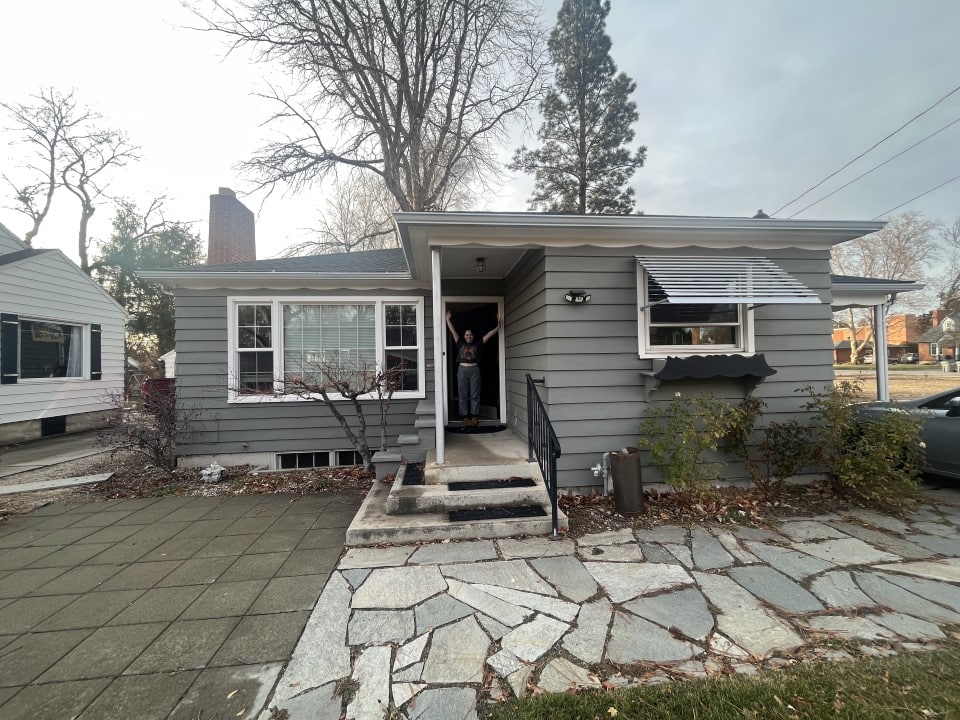The internet has come a long way since 1991, when Tim Berners-Lee created the first website using static HTML—basically just text and links. Early browsers like Mosaic and Netscape Navigator helped people access the web.
I started to code websites in the summer of 2000 (when all my friends could drive but I wasn’t of age, so I was bored at home…). Back when dial-up internet was still the norm. If you were around then, you probably remember Angelfire and Geocities—platforms where you could create your own site. These sites were full of colorful backgrounds, animated GIFs, hover effects, and web rings—little groups of websites you could jump between. Then the frames capability came out and it blew our minds because now we were able to have multiple areas on one web page (like a menu and the content). At the time, things like JavaScript and CGI scripts were starting to make websites more interactive and dynamic, while CSS (page styling) was beginning to improve the way websites looked and were laid out.
Fast forward to today, and I’m recently celebrating 17 years at CLM! It’s been crazy to see how the web has evolved from those slow, dial-up days to the fast, mobile-friendly sites we use now. By the mid-2000s, platforms like WordPress and Joomla made it easier to build and manage websites. As mobile browsing became more popular, responsive design became crucial, allowing websites to adjust and look great on any device.
Building a modern website requires more than just attractive visuals and content—it needs to be well-structured, fast, and user-friendly to provide a seamless experience for visitors.
Here are the key essentials to ensure your website meets today’s standards:
First and foremost, mobile friendliness is a must. With most of the web traffic coming from mobile devices, your website must feature responsive design, ensuring it looks and functions well across all screen sizes, from smartphones to desktops. Along with this, fast loading times are critical. Slow websites frustrate visitors and can harm your search rankings. Optimize images, reduce unnecessary code, and leverage tools like content delivery networks (CDNs) to ensure quick load speeds.
Clear navigation is equally important. A well-organized website allows users to find what they need quickly, improving their experience and increasing engagement. Clear menus, easy-to-find search bars, and logical page hierarchies are key to a successful navigation structure.
Search engine visibility is another vital factor. To make sure people can find your site and drive organic traffic, you need to optimize for search engines. Search Engine Optimization (SEO) includes proper use of keywords, ensuring fast load times, and clean code to help your rankings on search engines like Google.
In today’s digital landscape, security should never be overlooked. SSL certificates (which turn your site into HTTPS) are necessary to secure user data and build trust. Regular security updates, strong passwords, and website maintenance are also essential to protect against potential threats.
Many developers today rely on Content Management Systems (CMS), such as WordPress or Shopify, to streamline website creation and management. These systems allow for easy updates and content management without needing to delve into the code, making website maintenance much more efficient.
Analytics tools like Google Analytics are crucial for tracking visitor behavior and understanding how your site is performing. By analyzing metrics like traffic sources, page views, and user interactions, you can continuously improve your site to better meet the needs of your audience.
Accessibility is another key consideration. Your website should be usable by all visitors, including those with differing abilities. Ensuring your site is compatible with screen readers, providing descriptive alt text for images, and maintaining high color contrast are all important steps to make your site accessible to a broader audience.
Finally, integrating social media buttons or widgets can help boost engagement and encourage visitors to share your content, increasing visibility and driving traffic to your site.
Today’s websites need to be fast, secure, mobile-friendly, easy to navigate, and accessible—basically, everything that makes for a great user experience. The web has come a long way from the days of Angelfire and Geocities, and now we have sleek, dynamic sites that do so much more.
Let us help you create a website that checks all these boxes! Look at our portfolio to see how we’ve helped bring our customers’ visions to life online.





